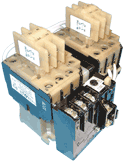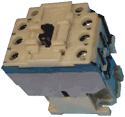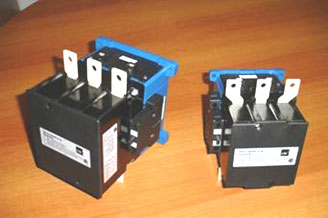Adjustment of electromagnetic starters and contactors
Magnetic starters and contactors are checked and adjusted according to the following program: external check, adjustment of the magnetic system; adjusting the contact system, checking the insulation resistance of live parts.
When visually inspecting contactors and magnetic starters, first of all, they pay attention to the condition of the main and blocking contacts, the magnetic system, check the presence of all parts of the contactor: non-magnetic seal in the DC contactor, fastening bolts, nuts, washers, short circuit in AC contactors, arc extinguishing chambers.
The ease of movement of the contactor is checked by closing it by hand. The movement of the magnetic system should be smooth, without jerks and jams.
 As the current flows through the coil, the AC contactor should make only a small noise.Loud contactor buzzing may indicate improper armature or core attachment, damage to the shorted circuit that surrounds the core, or loose armature against the solenoid core. To eliminate excessive hum, tighten the screws that fix the armature and the core.
As the current flows through the coil, the AC contactor should make only a small noise.Loud contactor buzzing may indicate improper armature or core attachment, damage to the shorted circuit that surrounds the core, or loose armature against the solenoid core. To eliminate excessive hum, tighten the screws that fix the armature and the core.
The tightness of the armature to the core is checked as follows. Place a piece of paper between the armature and the core and close the contactor by hand. The contact area should be at least 70% of the cross-section of the magnetic circuit, with a smaller contact area, the defect is eliminated by the correct installation of the core and armature. When a common gap is formed, the surface is scraped along the sheet metal layers of the magnetic system.
During the operation of the DC contactor, wear of the non-magnetic seal may occur, which reduces the gap and contributes to the adhesion of the armature to the core, therefore, in case of significant wear, the seal is replaced with a new one.
 The contact system is the most critical part of the magnetic starter contactors, therefore special attention should be paid to its condition. In the closed state, the contacts should touch each other with their lower parts, forming a linear contact along the entire width of the contact without gaps. The presence of suspended or hardened pieces of metal on the contact surface increases the contact resistance (and, accordingly, contact loss) by more than 10 times. Therefore, if sagging is detected, it is necessary to remove them with a file. Grinding and lubrication of the contact surface is not allowed.
The contact system is the most critical part of the magnetic starter contactors, therefore special attention should be paid to its condition. In the closed state, the contacts should touch each other with their lower parts, forming a linear contact along the entire width of the contact without gaps. The presence of suspended or hardened pieces of metal on the contact surface increases the contact resistance (and, accordingly, contact loss) by more than 10 times. Therefore, if sagging is detected, it is necessary to remove them with a file. Grinding and lubrication of the contact surface is not allowed.
In addition, with particularly critical contactors and magnetic starters, the initial and final compressive forces of the main contacts are determined. The initial push is the force created by the contact spring at the moment of contact of the contacts. It characterizes the elasticity of the spring. The final contact force characterizes the contact pressure when the contactor is fully closed and the contacts are not worn. Initial and final compressive forces are determined using a dynamometer.

The insulation resistance of the current-carrying parts of contactors and magnetic starters is checked with a megohmmeter 500 or 1000 V. The value of the insulation resistance of the coil should not be less than 0.5 MΩ.
In addition to the above works in setup program the following may be included:
a) checking the absence of a short circuit in the coil,
b) checking the contactors by repeatedly switching on and off,
c) personalization thermal relays magnetic starters.
